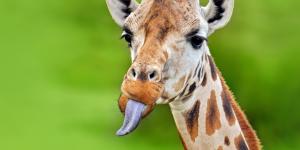What Type of Deer Is Bambi?

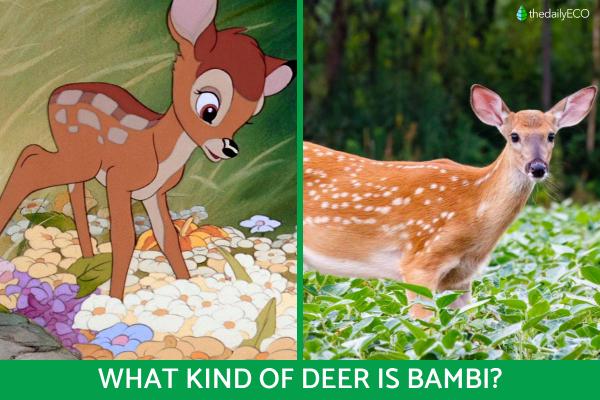
Bambi is a character that holds a special place in the Disney canon. While his adventures have brought great joy to many children since its 1942 release, there are elements of the story which have also proved somewhat traumatic. Although the story can become emotional, it has also helped with issues such as animal conservation. This is because Bambi is a deer and deer are a common target for hunters. In many ways, Bambi has become a poster boy for conservation, especially in the USA. Although we know Bambi is a deer, this leads thedailyECO to ask what type of deer is bambi?
What type of deer is Disney's Bambi?
Bambi is the protagonist of Disney's 1942 animated film which has captivated many children or general fan of animation since. Specifically, Bambi is a white-tailed deer (Odocoileus virginianus), also known as the Virginia deer. This artiodactyl mammal of the cervid family lives in the American continent.
It is important to specify that the deer in Disney's Bambi (1942) is a different species of deer to the original character from the novel on which it was based. This novel is called Bambi, a Life in the Woods (1923) by the Austrian author Felix Salten. As a European writer, the deer in the original novel was a roe deer (Capreolus capreolus). Also known as the European roe, this was the species which would have been most familiar to Salten.
Discover more about the type of mammal to which Bambi belongs with our article asking what are even-toed ungulates?
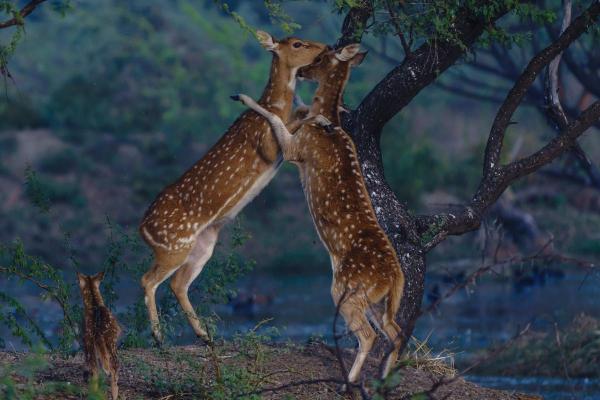
Characteristics of the white-tailed deer
Now we know that know Bambi is a white-tailed deer, we can look at some of the characteristics of this type of deer species:
- Coat color varies according to habitat and time of year: white-tailed deer fur is thin and coarse in spring and summer. It is reddish in color, but it becomes gray to brown as winter approaches. It will also become thicker and longer as the temperatures drop. Their population distribution includes tropical areas where it can be ochre or reddish in color, being lighter in higher altitudes where it is also colder. Adults have a white nasal band, eye sockets and throat patch. All ventral parts of their bodies such as their inner legs, belly and chin are white, as is the underside of their tail from which their common name is derived. Fawns like Bambi are reddish-brown with white dorsal markings that disappear at 3 or 4 months of age.
- They exhibit sexual dimorphism: males are heavier and more robust than females, reaching between 150-300 lb (68-136 kg), while females weigh between 88-198 lb (40-90 kg). They generally measure between 39-102" (99-259 cm), including the tail. Tropical white deer are smaller, generally not exceeding 132 lb (60 kg). Males have branched antlers that can reach between 3-25" (8-60 cm) from the base. These are renewed each year after the breeding season. Females have small and unbranched antlers that are much less noticeable.
- They are territorial: males compete for females and often fight each other. They have scent glands that they use to mark their territory, communicate, attract the opposite sex and as a threat signal. They also use urine for marking purposes.
- They can form groups: white-tailed deer can form groups of two to fifteen individuals. The basic social units are usually the female with her fawns and groups of young males. Males are usually solitary during the breeding season.
We discover more about what kinds of deer are in the family Cervidae with our related guide.

Where do white-tailed deer live?
The white-tailed deer is native to the American continents. It is distributed from southern Canada through most of the United States and Mexico in North America. It can also be found in South America in countries such as Peru, Ecuador, Bolivia, Colombia, northern Brazil, Venezuela and the Guianas, as well as countries in Central America.
This American deer inhabits a wide variety of habitats, including temperate, subtropical and semi-arid environments. It can occupy tropical rainforests, deciduous forests and savannas in Central America and northern South America. It is abundant in mixed pine-oak forests in Mexico and in secondary forests and scrublands, as well as forest-savanna ecotones.
Ecological limitations for the white-tailed deer in northern or mountain habitats are related to the depth, quality and duration of snowfall. The amount and distribution of precipitation is more of a determinant in southerly latitudes and lower elevations. As their population distribution suggests, the white-tailed deer is a highly adaptable species and can coexist in close association with humans and their agricultural and industrial activities.
Discover more about a highly adaptable deer species with our article sharing the different types of moose.
Where does Bambi live?
As we have explained, Bambi is an American species of deer. The population distribution covers almost the entire North and South American continents, meaning there are many different possible places Bambi from the Disney movie could live. However, it should not surprise us that Disney set the story in its base of operations, the United States of America. Specifically, it is set in the New England state of Maine.
Maine is home to many white-tailed deer. It has many lush forests which are a beautiful setting for the film, but also the ideal habitat for white-tailed deer. Since the original novel was set in Austria, it is an appropriate relocation for the film. This is because the forests of Maine and Austria are sufficiently similar to each other.
White-tailed deer diet
The white-tailed deer is a herbivorous mammal. It feeds primarily on leaves, tender shoots, fruits, seeds and even fungi. Various studies on the feeding habits of this deer species have established its remarkable adaptation to different types of vegetation. It is capable of consuming herbaceous, shrubby and woody tree species, behaving as an opportunistic or selective feeder depending on the ecological conditions of its habitat.
Discover more about the habitats of white-tailed deer with our article asking what is a dry forest?
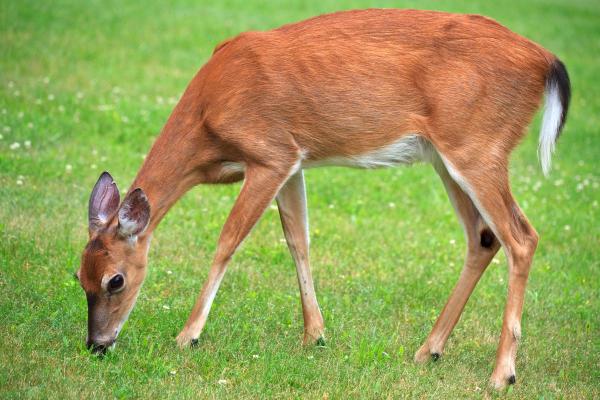
Reproduction of white-tailed deer
Female white-tailed deer reach sexual maturity at approximately one and a half years of age, although some may do so as early as seven months. Mating occurs when both sexes are around two years old. Females enter heat during the months of June to October. Males compete for them and engage in combat. A male can mate with numerous females. A single fawn is usually born after seven months of gestation, although up to three fawns can be born at a time in rare cases.
Threats and conservation of the white-tailed deer
Although this species has been listed as being of ‘least concern’ by the IUCN due to its high adaptability and wide distribution, some of its populations are in decline. This is mainly due to poaching, habitat fragmentation and loss, and the presence of infectious diseases. In terms of conservation, this species is found in several protected areas throughout its range. In fact, the populations present in Guatemala are included in CITES Appendix III.
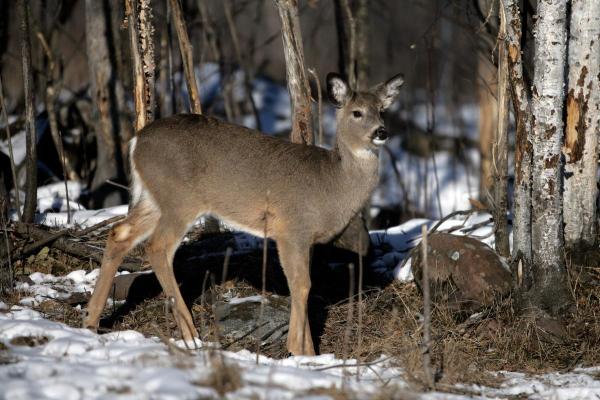
Other animals from Bambi
We know that Bambi is a white-tailed deer, but there are different animals in the Disney story that appear in the forest with him. The animals in Bambi include:
- Thumper: a rabbit who is a close friend of Bambi.
- Flower: a skunk.
- Faline: another fawn of the same species as Bambi.
- Mr. Owl: an owl who lives in the forest.
Now that you know what kind of deer is Bambi, you may want to know about animals are other Disney characters with our article asking what kind of animals are Timon and Pumba?
If you want to read similar articles to What Type of Deer Is Bambi?, we recommend you visit our Facts about animals category.
- IUCN. (2024). The IUCN Red List of Threatened Species.
https://www.iucnredlist.org




